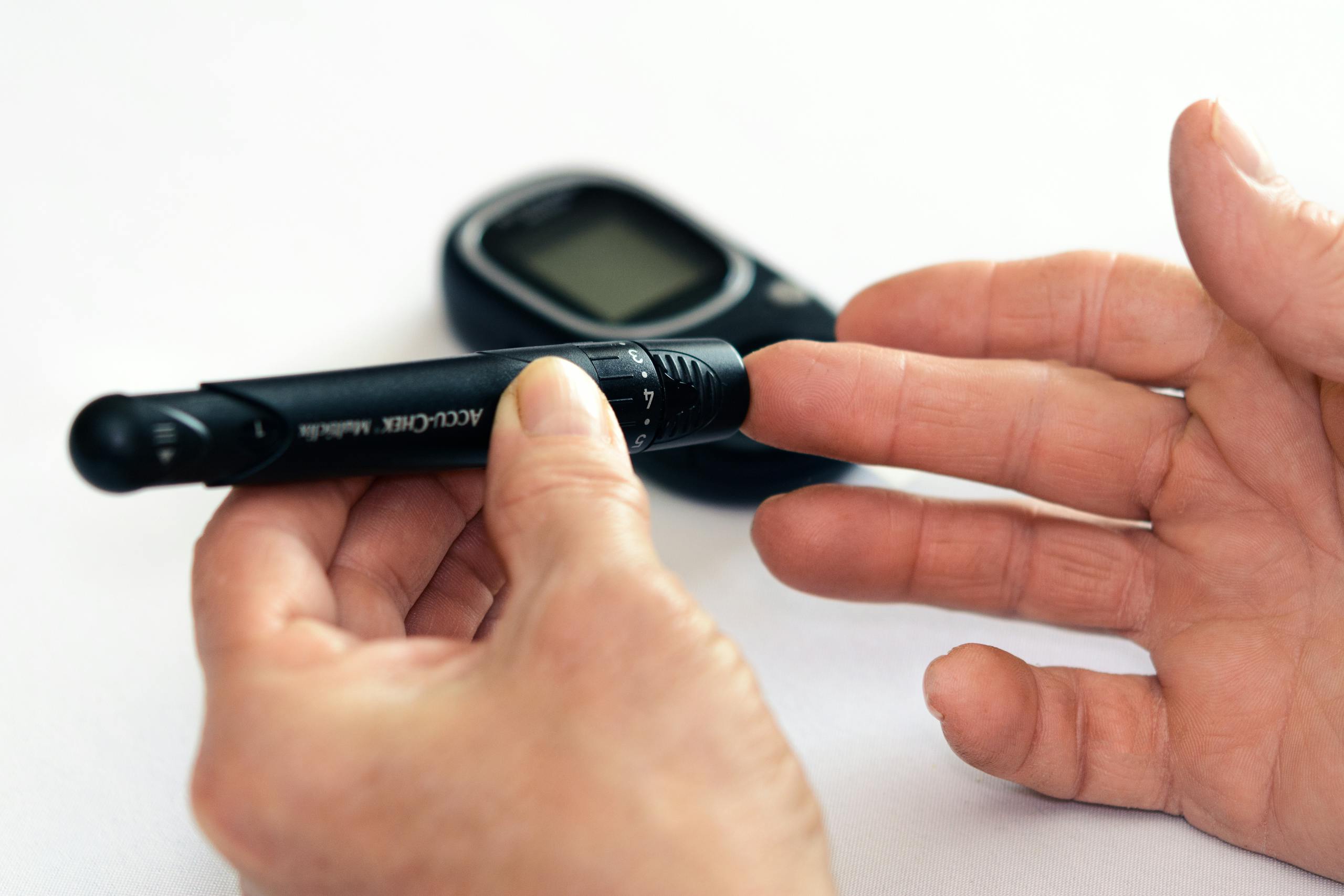Nearly Half of People With Diabetes Don’t Know They Have It

A new study published in The Lancet Diabetes & Endocrinology has revealed some concerning numbers about diabetes awareness and care around the world. According to the research, nearly half of all people living with diabetes don’t even know they have the condition. That’s millions of people walking around with high blood sugar levels, at risk of complications, but without a diagnosis.
The study, led by the Institute for Health Metrics and Evaluation (IHME) at the University of Washington in collaboration with global partners, analyzed data from 2000 to 2023, covering 204 countries and territories. This was not a small, localized project — it was a sweeping global review that looked at diabetes care across different age groups, both men and women, and every region on Earth.
Let’s break down what the study found, why it matters, and what it means for the future.
The Main Findings
- In 2023, about 44% of people aged 15 and older with diabetes were undiagnosed. In other words, nearly half of those with the disease had no idea they were living with it.
- Young adults were especially likely to go undiagnosed. This is concerning because although diabetes complications often appear later in life, years of uncontrolled blood sugar in younger adults can quietly damage organs and increase long-term health risks.
- Among those who did know they had diabetes, there were mixed results. 91.4% of diagnosed individuals were receiving some form of medication — typically insulin or other blood sugar-lowering drugs. That’s a strong number and shows that diagnosis usually leads to treatment.
- But here’s the problem: only 41.6% of treated individuals managed to achieve optimal blood sugar control. That means most people on treatment still weren’t controlling their diabetes effectively.
- Putting it all together, only about 21.2% of all people with diabetes worldwide had their condition managed at an optimal level. That’s about one in five people.
Trends Since 2000
The study didn’t just look at the present; it also tracked changes over two decades. Here’s how things shifted from 2000 to 2023:
- Diagnosis rates went up by about 8.3 percentage points. So, progress has been made, but slowly.
- Among those diagnosed, treatment rates improved by 7.2 percentage points.
- However, the percentage of people achieving healthy blood sugar control rose by only 1.3 percentage points over the entire period. That’s a tiny improvement in over 20 years.
The takeaway? We’re doing slightly better at diagnosing and treating diabetes, but managing the condition effectively remains a huge global challenge.
Regional Differences
The research also revealed major regional disparities in diabetes care. Not all countries are performing equally, and the gaps are striking:
- High-income North America had the highest diagnosis rates.
- High-income Asia Pacific had the highest treatment rates among diagnosed individuals.
- Southern Latin America stood out with the best blood sugar management rates among those on treatment.
- On the other hand, Central sub-Saharan Africa had the lowest diagnosis rates, with less than 20% of people aware they even had diabetes.
These differences highlight that while wealthier regions have made significant progress, many low- and middle-income countries are being left behind.
The Future: A Silent Epidemic?
One of the study’s most alarming projections is that by 2050, 1.3 billion people are expected to be living with diabetes. That’s more than double the number today.
If nearly half of those people remain undiagnosed, diabetes could become a silent epidemic, spreading quietly, causing long-term health complications, and putting enormous pressure on healthcare systems.
The authors stress the urgent need for investment in screening programs, especially for younger adults. They also emphasize the importance of affordable medications, glucose-monitoring tools, and stronger health systems in underserved regions.
The WHO Target
In 2022, the World Health Organization (WHO) launched the Global Diabetes Compact, which included an ambitious target: by 2030, at least 80% of people with diabetes should be diagnosed.
Right now, with only about 56% diagnosed, the world is not on track to meet that goal. Without major changes in policy, investment, and healthcare delivery, we risk falling short.
Why Diagnosis Matters
You might wonder: if people feel fine, why worry about an undiagnosed condition? The answer lies in how diabetes works.
Diabetes, particularly type 2 diabetes, often develops slowly and silently. Blood sugar levels rise over time, and the body struggles to use insulin properly. Early on, there might be no noticeable symptoms — or symptoms might be so mild (like fatigue or increased thirst) that people dismiss them.
But even when symptoms are absent, high blood sugar is damaging blood vessels and nerves. Over years, this leads to complications such as:
- Heart disease and stroke
- Kidney failure
- Vision loss (diabetic retinopathy)
- Nerve damage (neuropathy)
- Poor wound healing and amputations
This is why early diagnosis is crucial. If diabetes is caught early, lifestyle changes and medications can help prevent or delay these complications.
Types of Diabetes: A Quick Overview
Since we’re on the topic, let’s step back for a moment and look at the different types of diabetes.
- Type 1 diabetes: An autoimmune condition where the immune system destroys insulin-producing cells in the pancreas. Usually diagnosed in childhood or adolescence, but it can appear at any age. People with type 1 diabetes need insulin for life.
- Type 2 diabetes: The most common form, often linked with lifestyle factors such as obesity, poor diet, and physical inactivity, though genetics also play a role. The body becomes resistant to insulin or doesn’t make enough of it.
- Gestational diabetes: Develops during pregnancy and usually disappears after childbirth, but it increases the mother’s risk of developing type 2 diabetes later on.
Globally, type 2 diabetes makes up the vast majority of cases. That’s why public health efforts focus so heavily on prevention, early detection, and management of type 2 diabetes.
How Diabetes Is Diagnosed
Since underdiagnosis is such a big issue, it’s worth understanding how diabetes is actually diagnosed. The main tests include:
- Fasting blood glucose test: Measures blood sugar after at least 8 hours without food. A level of 126 mg/dL (7.0 mmol/L) or higher indicates diabetes.
- HbA1c test: Measures average blood sugar over the past 2–3 months. An HbA1c of 6.5% or higher signals diabetes.
- Oral glucose tolerance test (OGTT): Involves drinking a sugary liquid and measuring blood sugar after 2 hours. A level of 200 mg/dL (11.1 mmol/L) or higher indicates diabetes.
These tests are simple, relatively inexpensive, and widely available. Expanding access to them is key to closing the diagnosis gap.
What Needs to Happen Next
The study sends a clear message: if the world doesn’t act soon, diabetes could spiral into one of the most pressing health crises of the century. Here’s what experts say is needed:
- More screening programs, especially for younger adults and in low-income countries.
- Affordable medications and insulin for everyone who needs them.
- Better access to glucose monitoring tools like glucometers and continuous glucose monitors (CGMs).
- Health system strengthening, particularly in regions with the lowest diagnosis rates.
- Education and awareness campaigns so people know the risks and seek testing earlier.
Final Thoughts
The numbers are sobering. Nearly half of people with diabetes worldwide don’t know they have it. Among those who do, many aren’t managing their condition effectively. And with the number of cases projected to skyrocket by 2050, we are facing a potential public health disaster unless urgent steps are taken.
The good news is that diabetes is a condition where early detection and consistent management can make a huge difference. With the right policies, investment, and healthcare strategies, it is possible to turn these numbers around.
But time is short. The world has less than five years to dramatically improve diagnosis rates if we want to hit the WHO’s 2030 target. Whether governments, health organizations, and communities rise to this challenge will determine the future trajectory of this silent epidemic.
Reference: Global, regional, and national cascades of diabetes care, 2000–23: a systematic review and modelling analysis using findings from the Global Burden of Disease Study (The Lancet Diabetes & Endocrinology, September 2025)





